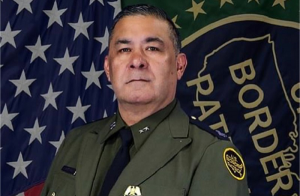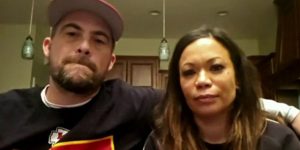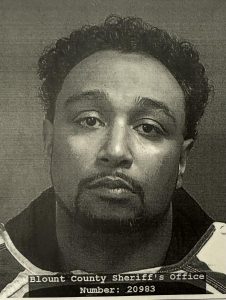Attorneys on Monday offered their final words to the jury in the killing of Ahmaud Arbery, with the prosecution saying that three white men chased him solely “because he was a Black man running down the street” and the defense repeatedly blaming Arbery for his own death.
In closing arguments, a defense attorney for the man who fired the fatal gunshots said the 25-year-old was killed as he violently resisted a legal effort to detain him to answer questions about burglaries in the neighborhood.
“It is absolutely, horrifically tragic that this has happened,” attorney Jason Sheffield said. “This is where the law is intertwined with heartache and tragedy. You are allowed to defend yourself.”
The arguments unfolded before a disproportionately white jury after 10 days of testimony that concluded last week, not long after the man who shot Ahmaud Arbery testified that he pulled the trigger in self-defense.
Arbery’s killing became part of a larger national reckoning on racial injustice after a graphic video of his death leaked online two months later. Though prosecutors did not argue that racism motivated the killing, federal authorities have charged all three men with hate crimes, alleging that they chased and killed Arbery because he was Black.
Also Read: Ahmaud Arbery killing: Judge denies defense’s request for mistrial
Father and son Greg and Travis McMichael grabbed guns and pursued Arbery in a pickup truck after spotting him running in their neighborhood on Feb. 23, 2020. A neighbor, William “Roddie” Bryan, joined the chase and recorded the video of Travis McMichael opening fire as Arbery threw punches and grabbed for his shotgun.
No one was charged in the killing until Bryan’s video leaked and the Georgia Bureau of Investigation took over the case from local police. All three men face counts of murder and other charges.
Prosector Linda Dunikoski told the jury the defendants had no evidence Arbery had committed crimes in their neighborhood, but instead acted on assumptions based on neighborhood gossip and speculative social media posts.
“They made the decision to attack Ahmaud Arbery in their driveways because he was a Black man running down the street,” Dunikoski said. She added: “They shot and killed him. Not because he was a threat to them. But because he wouldn’t stop and talk to them.”
Defense attorneys say the men suspected Arbery had burglarized a house under construction and intended to hold him until police arrived. Security cameras recorded Arbery inside the house five times, but none of the videos showed him stealing or damaging anything.
Dunikoski said the McMichaels and Bryan chased Arbery for five minutes, using their trucks to cut him off, run him off the road and otherwise prevent him from fleeing. And she repeated Greg Michael’s words to local police after the shooting that Arbery was “trapped like a rat.”
Bryan recorded Travis McMichael standing with a shotgun outside the driver’s side door of his idling truck when Arbery approched on foot, then ran around the passenger side. They met in front of the truck, which blocked the camera’s view, when Travis McMichael fired the first of three shotgun blasts. The video shows Arbery punching him and grabbing for the gun as two more shots are fired, then Arbery turns to try to run again before falling facedown in the street.
“He chose to fight,” said Laura Hogue, an attorney for Greg McMichael. She said Arbery decided “without any sense of reason to run at a man wielding a shotgun, leaving him with no other alternative but to be placed in a position to kill him.”
Referring to a smiling photo of Arbery the jury had been show at the trial, Hogue told the jury: “A beautiful teenager with a broad smile in a crooked baseball cap can go astray … And years later he can end up creeping into a home that’s not his own, and run away instead of facing the consequences.”
Bryan’s attorney, Kevin Gough, suggested Arbery should have cried for help if he was being chased unjustly.
“Why isn’t he calling out, `Hey, somebody call 911! There’s crazy people after me,’” Gough said. “Maybe that’s because Mr. Arbery doesn’t want help.”
Gough said Bryan did not know the McMichaels’ had guns until moments before the shooting. And he suggested a higher power guided Bryan to join the pursuit so he could record the shooting on his phone.
“You you can call it karma. You can call it fate. I would call it divine providence,” Gough said. “Somebody is guiding Mr. Bryan, whether it’s a conscious thought process or not. Something is guiding Mr. Bryan down this street to document what’s going on.”
Sheffield, who represents Travis McMichael, said his client never wanted to shoot Arbery but was forced to make a life-or-death decision when Arbery charged at him in front of the truck.
Also Read: Arbery’s shooter facing hard questions; Black pastors rally
He said residents of Satilla Shores were already nervous amid reports of thefts and suspicious people in the neighborhood. He said Arbery’s frequent visits to the unfinished home made it reasonable to suspect he had stolen items from a boat the home’s owner kept in the doorless garage a short time before he installed the cameras.
Then Travis McMichael had his own “horrifying experience,” Sheffield said, “when he encountered Arbery in the yard at night 12 days before the shooting. He breathlessly told a 911 dispatcher that Arbery had reached for his pocket as if he had a gun when confronted.
Dunikoski noted that Arbery never threatened the McMichaels during the chase, and he carried no weapons.
“You can’t bring a gun to a fistfight. It’s unfair, right?” the prosecutor said.
She said it was Travis McMichael who attacked Arbery — first with his truck, then by pointing a shotgun at him as Arbery ran toward him.
“They can’t claim self-defense under the law because they were the initial, unjustified aggressors,” Dunikoski said, “and they started this.”
Arbery had enrolled at a technical college and was preparing to study to become an electrician like his uncles when he was killed.






